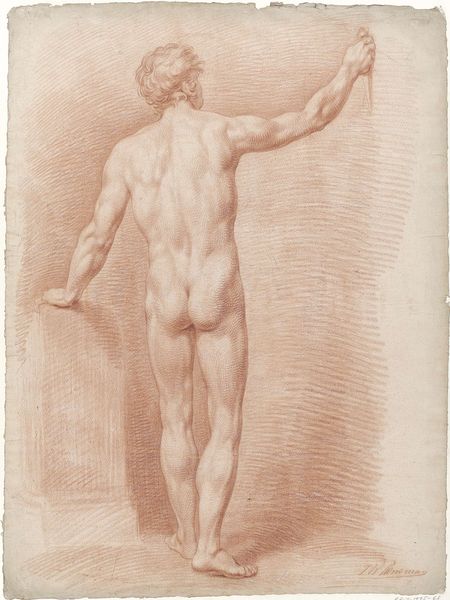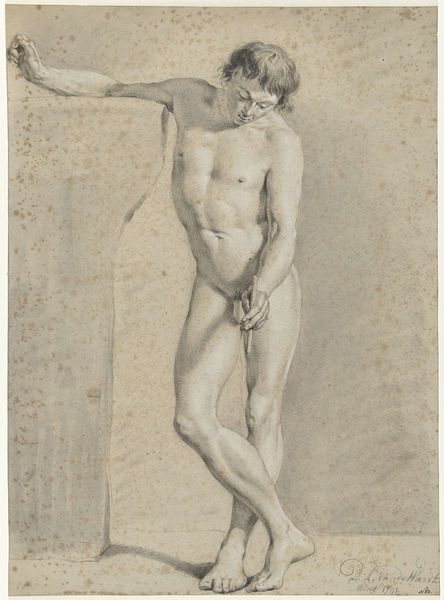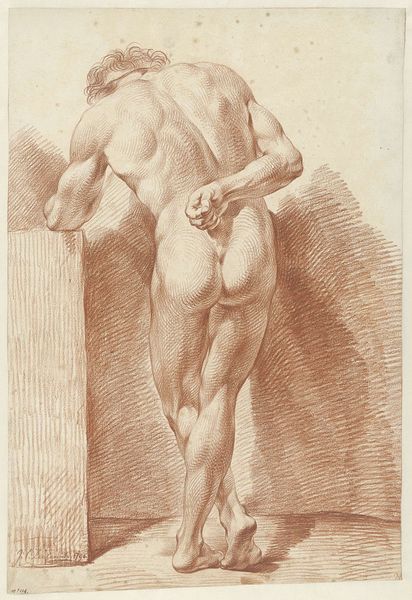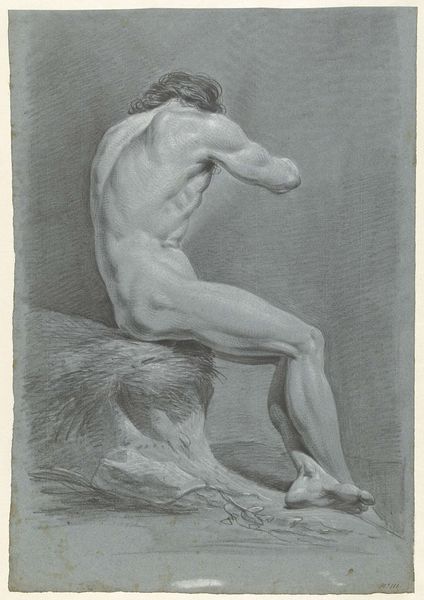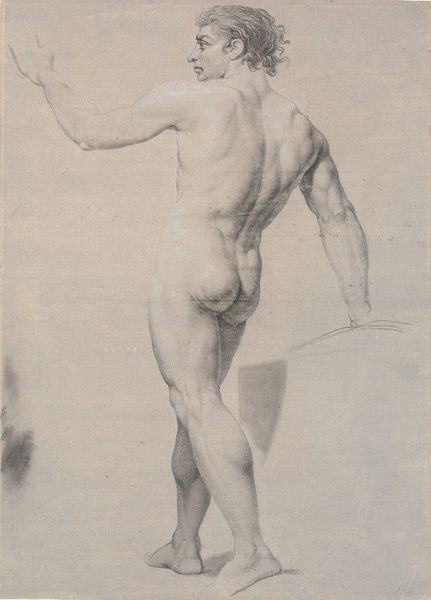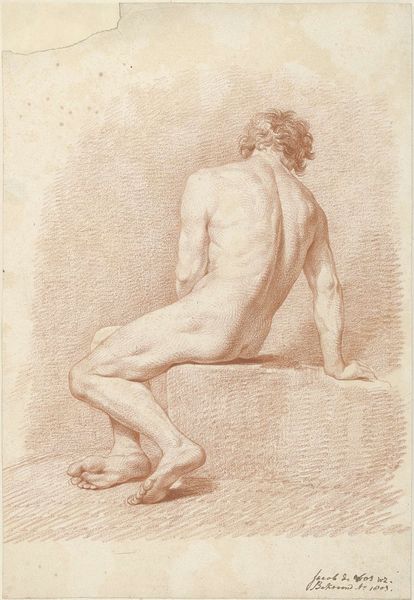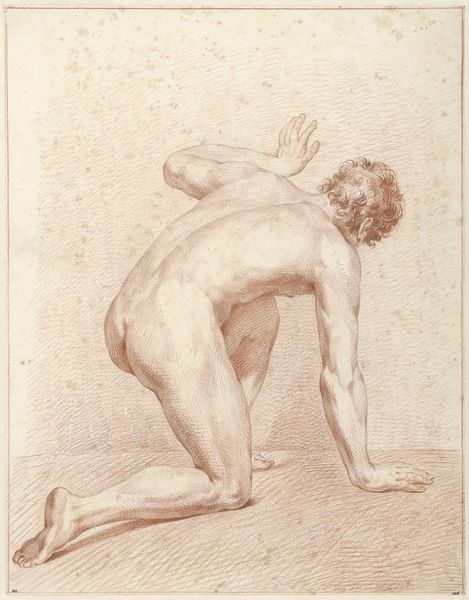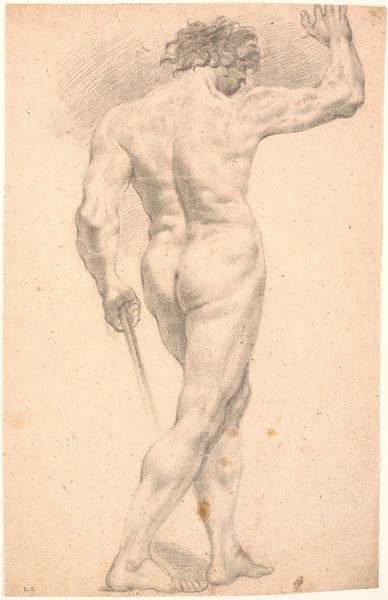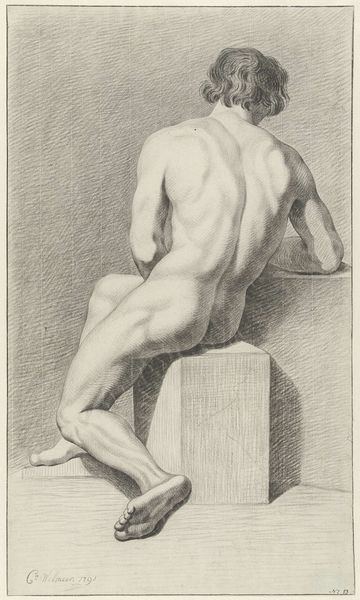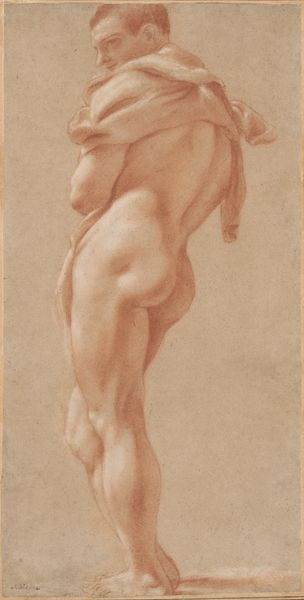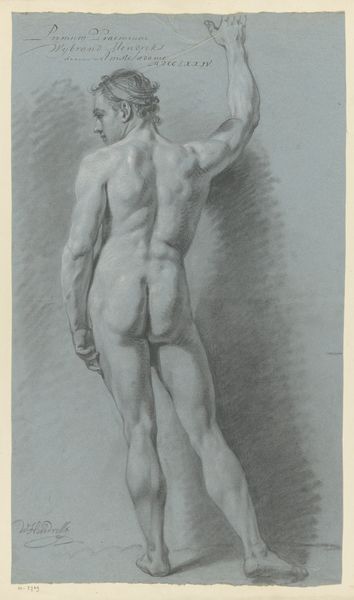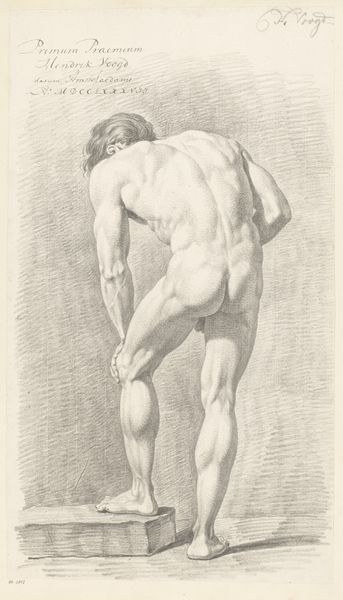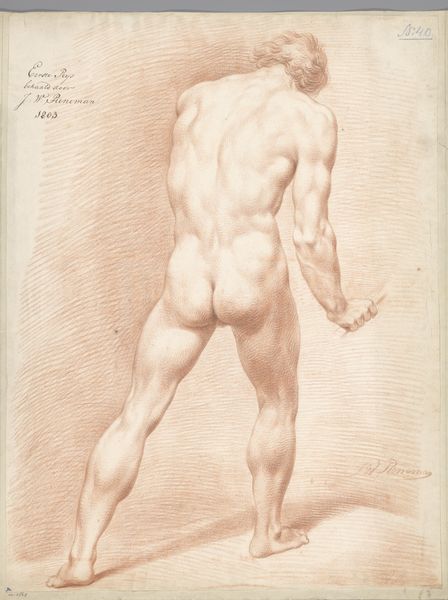
drawing, pencil
#
drawing
#
neoclacissism
#
charcoal drawing
#
figuration
#
form
#
pencil
#
line
#
history-painting
#
academic-art
#
nude
#
realism
Dimensions: height 538 mm, width 394 mm
Copyright: Rijks Museum: Open Domain
Editor: Here we have Jean Augustin Daiwaille's "Figuurstudie van staand naakt," created around 1810, a pencil and charcoal drawing. The figure's pose is interesting; there's a sense of coiled tension. How does this artwork speak to you formally? Curator: Intriguing. Consider the tension achieved through line and shading. Note how Daiwaille uses hatching to define the musculature, creating a powerful sense of three-dimensionality on a two-dimensional plane. Observe the emphasis on anatomical accuracy typical of academic art, revealing the artist's formal training. Where does the eye rest according to its formal composition? Editor: I think the darkest marks above the calves and on the forearm draw the eye in. But I notice how light reflects off the figure's back, softening some edges. Curator: Precisely! That light not only models the form, but emphasizes the geometric structure of the back, drawing a visual parallel to the hard diagonal of the wall, lending a feeling of Classical monumentality to the figure. Also, do you observe a visual effect on its legs? Editor: Now that you mention it, the way the muscles of his legs are drawn looks pretty tight. Is that done to highlight the subject's build? Curator: Indeed! The linearity and precision certainly call to mind Neoclassical ideals. These stylistic elements prioritize clarity, order, and a return to classical artistic principles. And while rooted in Realism through anatomical exactitude, it adheres to Academic traditions via idealized form. Notice that despite this apparent objectivity, there’s considerable artifice here. How so? Editor: So it looks realistic but the position of the subject is not that common, and neither are all those strong muscles? Curator: You're perceiving a careful construct. It adheres not only to standards of proportion, but to idealized masculine beauty codified within Western art for millennia. We must also note its inherent artificiality within a studio context of pose and execution; as such, it is quite self-referential of form over any sort of referential depiction. Editor: This study's a lot more than a sketch then; it embodies a whole system of thinking about art! I’ll be looking at these qualities now! Curator: Indeed, with close analysis we might even gain further perspective into semiotics within Neoclassicism.
Comments
No comments
Be the first to comment and join the conversation on the ultimate creative platform.
